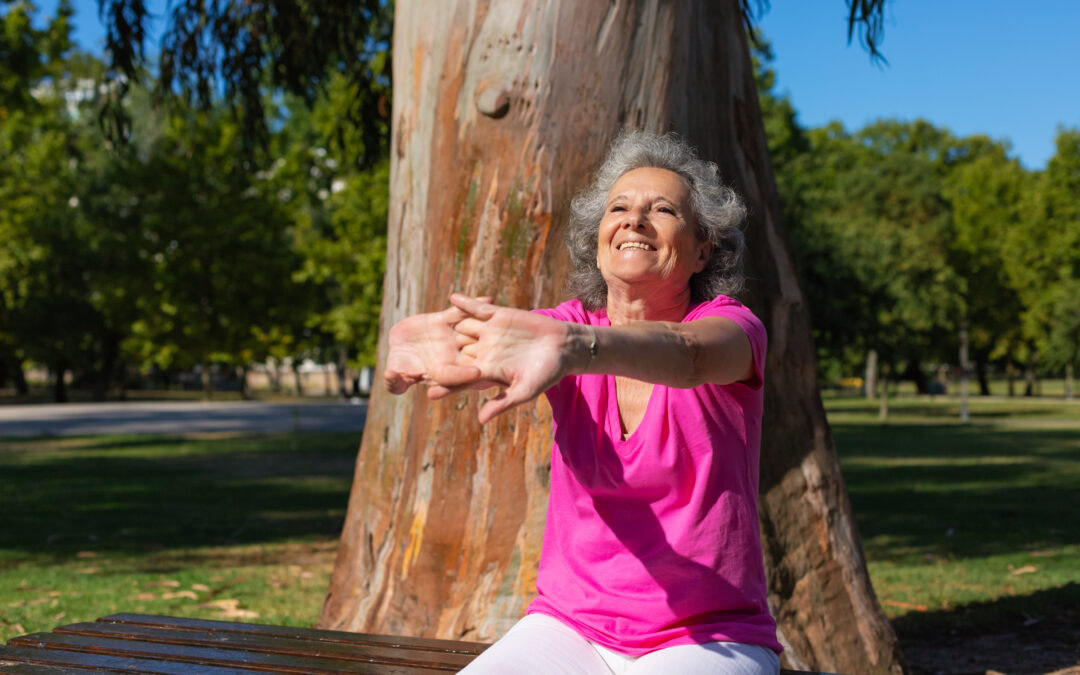Dear Friend,
Nearly two years into the Covid pandemic I have decided to take a closer look at our Immune System and how it responds to regular exercising and whether it can help you have a better fighting chance against a Covid-19 infection. Before diving into the different types of exercises and intensities and their affect on our Immunity let me make it very clear that this blog is on no way trying to undermine vaccines and their prevention of infection and severe outcomes.
What is our Immune System comprised of?
We differentiate between the Innate Immune System which is the part you are born with and the Adaptive Immune System which is acquired through the exposure to microbes (viruses, bacteria, fungi and protozoa) or chemicals released by microbes. Both Systems work hand in hand to protect you from intruders causing illness.
The Innate Immune System:
This system that we are born with is made up of your skin, your eye’s cornea, and the mucous membrane that lines the respiratory, gastrointestinal, and genitourinary tract. It protects against harmful intruders like worms, parasites, and cells like Cancer. As soon as it recognizes an intruder it’s cells called phagocytes, surround, cover and devour the intruder.
The Adaptive or Acquired Immune System:
This system protects against specific invaders. Once exposed to an invader the System will develop specific proteins called Antibodies in the b- lymphocytes. These antibodies continue to live with you and should there be any repeat exposure to that same invader your Immune system is ready to defeat it. Ongoing exposure to various invaders creates a large library of Antibodies and improved Immunity. Vaccinations simply sidestep the initial infection and teach the Adaptive Immune System how to build specific Antibodies i.e. against Polio or more recently against Covid-19.
The cells of both Systems are made in different organs of the body. These organs are the:
- Adenoids. Two glands located at the back of the nasal passage.
- Bone marrow. The soft, spongy tissue found in bone cavities.
- Lymph nodes. Small organs shaped like beans, which are located all over the body and connect via the lymphatic vessels.
- Lymphatic vessels. A network of channels all over the body that carries lymphocytes to the lymphoid organs and bloodstream.
- Peyer patches. Lymphoid tissue in the small intestine.
- Spleen. A fist-sized organ located in the belly (abdominal) cavity.
- Thymus. Two lobes that join in front of the windpipe (trachea) behind the breastbone.
- Tonsils. Two oval masses in the back of the throat.
(https://www.hopkinsmedicine.org/health/conditions-and-diseases/the-immune-system)
Does regular exercising help improve one’s defenses against viruses, bacteria and parasites?
Epidemiological studies have shown that regular physical activity or frequent structured exercise programs correlate directly with a reduction of many communicable diseases such as viral and bacterial infections, and non-communicable diseases like cancer and chronic inflammatory disorders. These reductions in diseases due to a physically active lifestyle clearly imply improved immune competency and regulation. In addition, staying physically active or exercising regularly seems to delay immunological aging providing better protection at an advanced age. The exact ways by which exercise improves immune functions is still not fully understood. There are some thoughts that the increased circulation contributed to exercising moves the cells of the immune system more quickly around and distributes White Blood Cells more towards the periphery resulting in a heightened response to bacterial and viral antigens. The effect of a single bout of exercises on immune functions on the other hand is still controversial and many still believe that high intensity exercises can lead to a temporary suppression of immune functions. A recent critical review of past studies by John Campbell and James Turner of the University of Bath in Great Britain (Frontiers in Immunology., 16 April 2018) did not confirm that suspicion and found that frequent and long-term exercises at the very least don’t have any negative affect on immune functions. Controversially a review by David Nieman and Laurel Wentz also dated 2018 (Journal of Sport and Health Science – Volume 8, Issue 3, May 2019, Pages 201-217) does still insist that athletes at times of intensified training and competition are at a heightened risk for infection mostly due to the increase of stress hormones. They did find an inverse relationship between moderate exercises and illness risk to be true just like the review by Campbell and Turner. As the jury is still out on workout intensities I recommend if you are a competitive athlete engaged in high intensity high volume training to observe your own immune responses during times of competition and high intensity training. Nearly all my clients and patients, including myself, no longer are exercising at such levels and can safely presume that our workouts indeed have a positive effect on our Immune system short and long term.
Are certain types of exercises more successful than others in promoting immune system improvements?
According to Nieman 30-60 minutes of moderate intensity aerobic activities, like a brisk walk, jog or bicycle ride seem to show the greatest success for improving our immune functions by increasing blood and lymphatic circulation moving immune system cells at higher numbers and higher rates through the body. He indicates that weightlifting at moderate intensity might do the same but further studies are needed to verify. The same can be said about High Intensity Interval Training that utilizes maximal intensities for 20-60 seconds alternating activity with full rest, as long as it it done for extensive periods of time according to Nieman.
A study published by Bethany Diment et al. in 2015 claims that prolonged moderate intensity exercises had a negative effect on immunity while no such impact was seen with high or moderate short-term intensities. (Med Sci Sports Exerc. 2015 Jul;47(7))
What does this mean for exercising during the Pandemic
Fortunately most gyms have reopened even if at lower capacities and or other restrictions allowing people to get back to their previous routines. Those who are still concerned about a possible infection and refrain from rejoining Fitness Centers or classes please use the outdoors 5 days per week for walking, hiking, jogging or cycling and find a place in your home that allows you to do some calisthenic exercises to maintain muscular strength and stretching exercises to maintain functional range of motion. These workouts should be sufficient getting you through these difficult times without giving up on the many benefits including improved immunity that regular exercising promotes.
Exercising as Therapy
While there is great consensus that regular exercising protects against acute and chronic illnesses by improving immune system capacity and delaying the negative consequences of aging on the immune system, there is no evidence that supports exercising during times of acute illness such as the cold or flu to treat such illness. In fact, intense or prolonged exercising during such times of infections has shown to exacerbate the illness, often leading to greater complications. Rest during the cold or flu is strongly recommended.
I hope I was able to give you some insights into the connection between exercising and immunity and hope that you will find the time in your day to day life to stay strong, fit and healthy even during these challenging times.
Hartmut – M.S. Physio-Therapy

